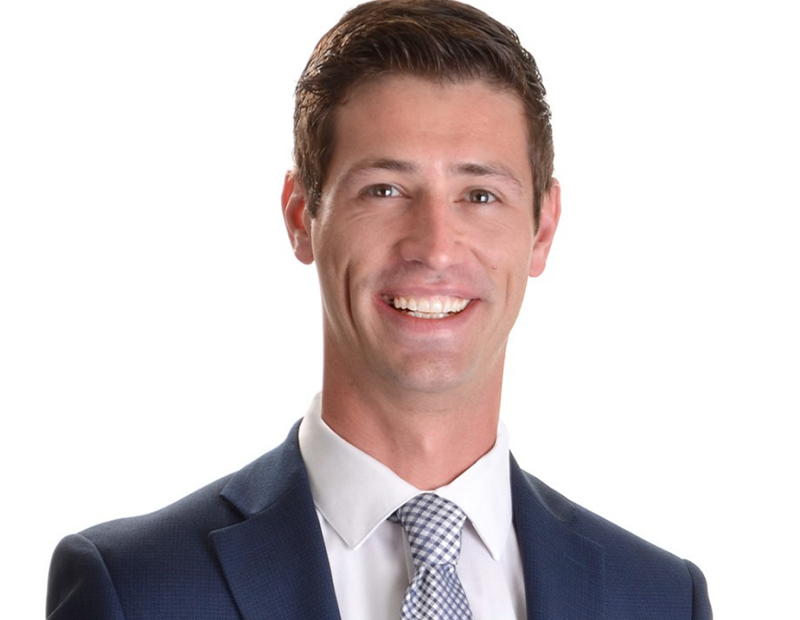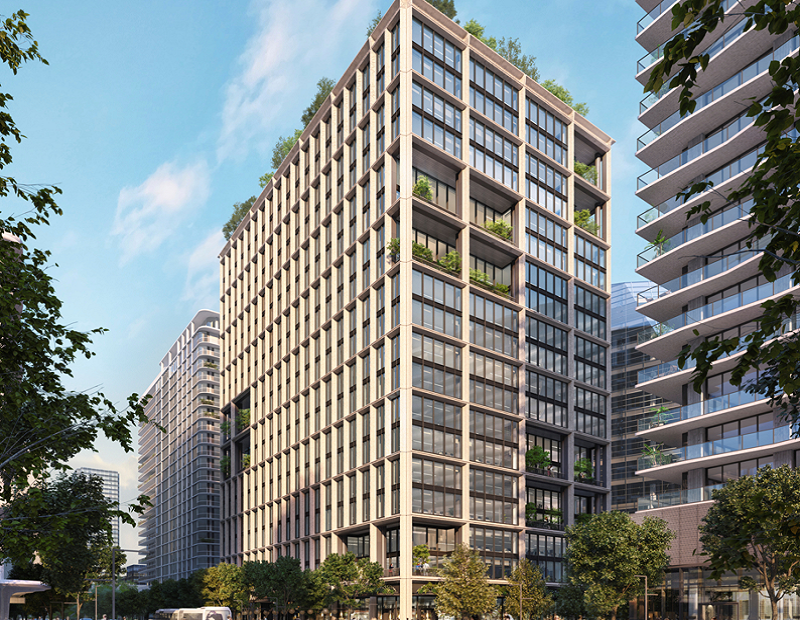Why Millennials Prefer Central Florida’s High-Tech Corridor
JLL Research Analyst Ben Landes talks about the factors drawing young professionals to the region, a trend he expects to persist despite current setbacks.
Until early this month, when the entire state of Florida went under lockdown, Central Florida’s High-Tech Corridor—the Interstate 4 corridor—hadn’t been showing any signs of slowing down. A dynamic technology sector, as well as the area’s more traditional economic engines—tourism and the entertainment industry—were fueling its resurgence.
According to a recent JLL report, more than 265,000 people filled tech positions in 2019 in Central Florida and the number was expected to continue to grow, before the coronavirus outbreak. However, around the same time, the Walt Disney Resort closed, travel was restricted and companies such as OneWeb Satellites in Merritt Island, Fla., announced workforce cuts. Time will tell if this is just the beginning of more layoffs in the area of tech.
READ ALSO: How Coronavirus Is Impacting Office Leasing
JLL Research Analyst Benjamin Landes, who has been tracking the Millennial migration phenomenon and the impact of increased tech activity in the region, pointed out that, as a result of these two trends, there has been a significant change in leasing and development activity in Central Florida in the past two years. He expects the resurgence to continue, despite the fact that, at this point, firms are delaying any big decisions in terms of leasing and development.
What was the state of leasing activity among tech firms across Central Florida prior to the COVID-19 crisis?
Landes: Over the 12 to 24 months before the outbreak, we saw a dramatic increase in leasing by technology companies in Central Florida. The number one reason a firm chooses any location is almost always talent. The High-Tech Corridor is home to over 500,000 students enrolled in a diverse set of programs across dozens of universities, colleges and technical schools. With programs ranging from certifications in production technology for manufacturers on the Space Coast to the world’s foremost entomology program at the University of Florida, employers find filling positions much easier when they have a large, diversified talent pool to hire from.
Secondly, new firms were also attracted to the area’s low cost of living and burgeoning talent pipeline. Finastra, a British fintech firm founded in 2017, found everything they were looking for in Lake Mary, Fla., and leased 109,000 square feet, which represents the entire Phase I of The Edison at Primera. Existing firms were also finding success and expanding their Central Florida operations. Fattmerchant opened its doors with less than 3,500 square feet back in 2015, but expanded to over 18,000 square feet in 2019, after announcing plans to expand its staff to nearly 200 workers.
Have you noticed any changes in activity since the coronavirus pandemic started?
Landes: Social distancing has been a huge disruption in a lot of ways and could have lasting impacts on the way we live, work and socialize. Due to the unknowns about the duration and extent of the disease spread, it’s hard to predict the impact on the local economy. Firms are generally delaying big decisions, as they look for signals on where their business is headed this year.
Which real estate sectors were benefiting the most from growth in the high-tech sector, and why?
Landes: The growth of the high-tech sector has had the strongest impact on office real estate in Central Florida. Over the 12 months prior to the pandemic, technology companies leased more than 1 million square feet of office space across the High-Tech Corridor. Additionally, many tech firms and startups were working out of flex office spaces, which came with a lower price tag and more flexibility to do light manufacturing or lab work, as well as administration and research.
Additionally, Central Florida’s supply of office space has been constrained by a pronounced lack of big-block spaces, with almost nothing over 50,000 square feet available in the region. This spurred more development, as rental rates were finally beginning to rise to levels that merit new construction. While raw land can hardly be called “scarce” in Central Florida, desirable raw land is becoming more and more so.
READ ALSO: CPE’s Coronavirus Coverage
Give us an example of a recent or upcoming office project making an impact in the region. Why are these appealing to Millennials and Gen Zers?
Landes: Water Street Tampa is a perfect example. First of all, it’s located right in the heart of downtown, a few blocks outside of the main central business district. Rather than being lost in a forest of corporate silos, Water Street stands out. Just off the bay, the site extends from the Tampa Marriott Water Street to the Sparkman Wharf retail and office venue, both near completion of extensive renovations.
Secondly, the building at 1001 Water St. was designed to “wow” today’s modern workforce with a biophilic design, which integrates natural materials with access to daylight, and expansive views of beautiful Tampa Bay. Floor-to-ceiling windows and double-height terraces with gardens fill the offices with natural light and connect people to nature. This design extends throughout the entire district and has been proven to improve wellness for workers, which, in return, is expected to increase productivity.
Finally, the amenities are virtually unprecedented in Central Florida. The 20-story penthouse floor, usually reserved for top-dollar tenants, is an amenity floor designed for use by all tenants, featuring a lounge, a terrace and a large meeting room.
For Brevard County, Tampa Bay and Orlando—do you see a different recipe for success in each of these markets or do they rely on the same fundamentals for attracting a younger workforce?
Landes: Brevard, Tampa and Orlando are three completely different animals. While they all lie along the High-Tech Corridor and they all boast thriving technology sectors, each has unique characteristics that define their appeal, growth and specialization.
Brevard County was built on the water and around the space industry. It offers an unparalleled quality of life, paired with a plethora of unique opportunities to work on a revolutionary technology that will forever alter the course of human history. From rocket scientists to production technicians, Brevard had the most highly concentrated high-tech economy in Florida, according to a 2018 report from the Milken Institute.
Orlando’s draw is the ultimate live-work-play arrangement. Imagine living 20 minutes away from six of the world’s top 25 theme parks, in an affordable home that is also only 20 minutes away from work. That is the reality for hundreds of thousands of people who live in and around Orlando. The city also boasts the nation’s second-largest university, which offers not only a world-renowned hospitality program but an engineering school that provides the most engineers to the aerospace industry in the country.
Tampa’s beautiful bay and glimmering coastline have made it a prime target for domestic migration, pretty much since the invention of air conditioning. Now, over 80 colleges, universities and technical schools in the region contribute to a robust talent pipeline. What’s more, an average of 75 percent of graduates end up staying in Florida—a majority within the Tampa MSA, where they find a rich history, cultural diversity and an amazing quality of life.
Let’s talk about demographic data. How much of the Millennial talent is locally educated and how much of the younger workforce is coming from other states?
Landes: The vast majority of younger talent in Central Florida was educated locally. Two-thirds of University of Central Florida graduates and three-quarters of University of South Florida graduates stay in Florida after graduation, according to the schools. Many of the young professionals who live and work in the area originally migrated from another state to attend university, but decided to stay. That is not to say, however, that the same is true of older Orlando professionals. Ordinarily, Florida gets over 1,000 new residents every day—many from colder climates along the Rust Belt and in the Northeast. Puerto Rico has also contributed significantly in recent years, partially due to the devastation caused by Hurricane Maria in 2017.
Will the trend of Millennials flocking to Central Florida’s High-Tech Corridor evolve going forward?
Landes: I don’t see this trend reversing anytime soon, or even in my lifetime, to be frank. The draw of the Sun Belt is undeniable and Central Florida is more appealing than the competition. The weather is nicer for longer periods, the cost of living is lower and there are so many fun things to do.
To bolster the trend, firms simply need to keep investing in the region. As the population continues to grow across the High-Tech Corridor, we’ll need more housing, more office space and more retail centers. Millennials love transit-oriented development and amenity-rich environments that enable the live-work-play experience, while giving them the feeling of community. Finally, they will want to see sustainable investments that won’t spoil Florida’s natural beauty for the next generation.
How do you see the region’s commercial real estate market developing further, given the challenges posed by the pandemic?
Landes: In times of uncertainty, we often see delays in decision-making for leasing and investment, as well as moderate demand, as short-term cost reduction can overtake long-term planning. Real estate investment has fluctuated during previous crises, but the overarching trend over time has been for increased allocations to the sector and we see no reason for this to change. We will know more about potential longer-term impacts on real estate when we have greater clarity on the extent and duration of the outbreak and the related response from consumers, businesses and government.










You must be logged in to post a comment.